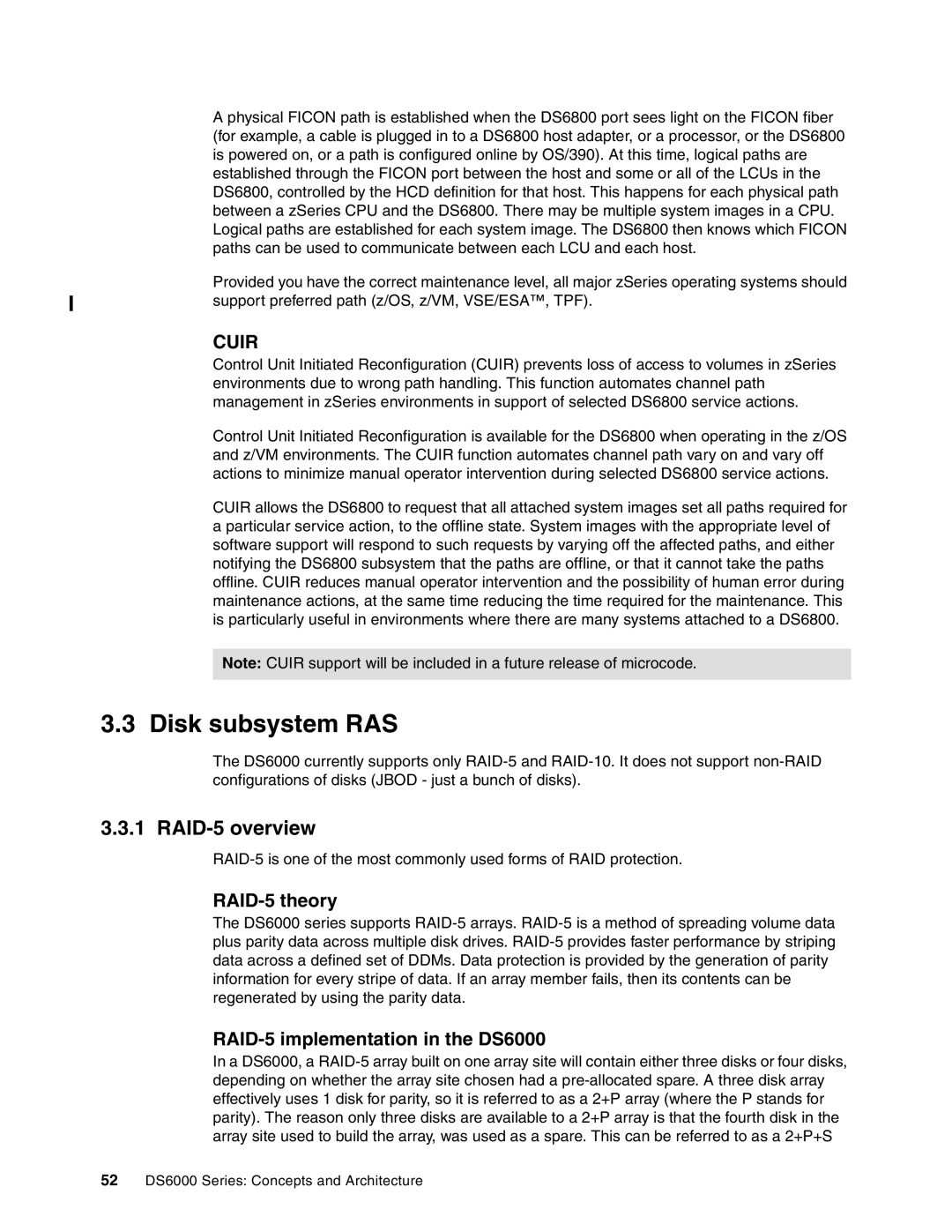
A physical FICON path is established when the DS6800 port sees light on the FICON fiber (for example, a cable is plugged in to a DS6800 host adapter, or a processor, or the DS6800 is powered on, or a path is configured online by OS/390). At this time, logical paths are established through the FICON port between the host and some or all of the LCUs in the DS6800, controlled by the HCD definition for that host. This happens for each physical path between a zSeries CPU and the DS6800. There may be multiple system images in a CPU. Logical paths are established for each system image. The DS6800 then knows which FICON paths can be used to communicate between each LCU and each host.
Provided you have the correct maintenance level, all major zSeries operating systems should support preferred path (z/OS, z/VM, VSE/ESA™, TPF).
CUIR
Control Unit Initiated Reconfiguration (CUIR) prevents loss of access to volumes in zSeries environments due to wrong path handling. This function automates channel path management in zSeries environments in support of selected DS6800 service actions.
Control Unit Initiated Reconfiguration is available for the DS6800 when operating in the z/OS and z/VM environments. The CUIR function automates channel path vary on and vary off actions to minimize manual operator intervention during selected DS6800 service actions.
CUIR allows the DS6800 to request that all attached system images set all paths required for a particular service action, to the offline state. System images with the appropriate level of software support will respond to such requests by varying off the affected paths, and either notifying the DS6800 subsystem that the paths are offline, or that it cannot take the paths offline. CUIR reduces manual operator intervention and the possibility of human error during maintenance actions, at the same time reducing the time required for the maintenance. This is particularly useful in environments where there are many systems attached to a DS6800.
Note: CUIR support will be included in a future release of microcode.
3.3 Disk subsystem RAS
The DS6000 currently supports only
3.3.1 RAID-5 overview
RAID-5 theory
The DS6000 series supports
RAID-5 implementation in the DS6000
In a DS6000, a
52DS6000 Series: Concepts and Architecture
